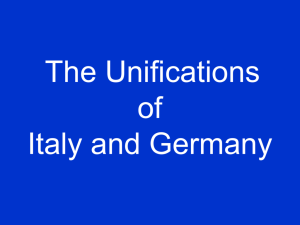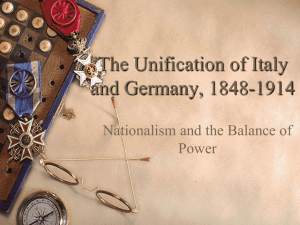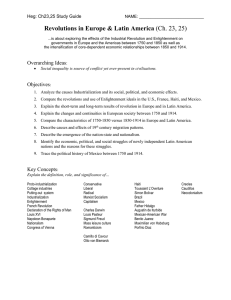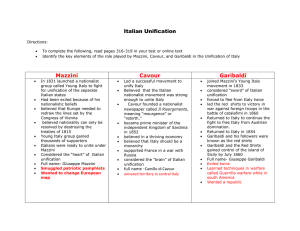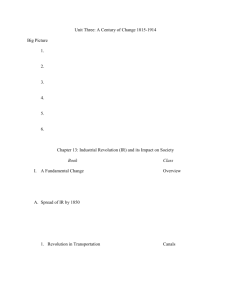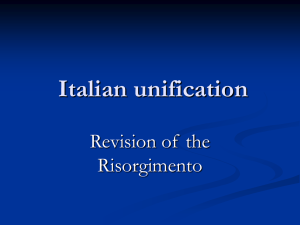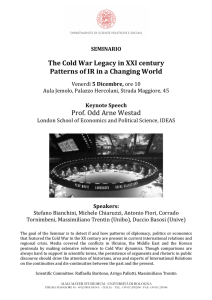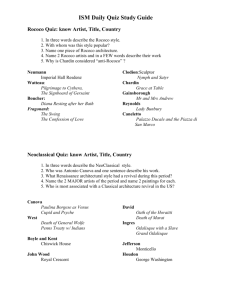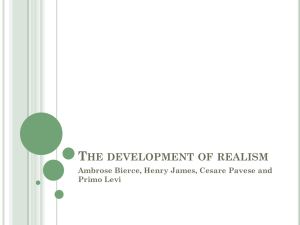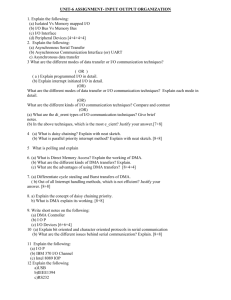Chapter 6 – Enlightenment and Revolution (1550
advertisement
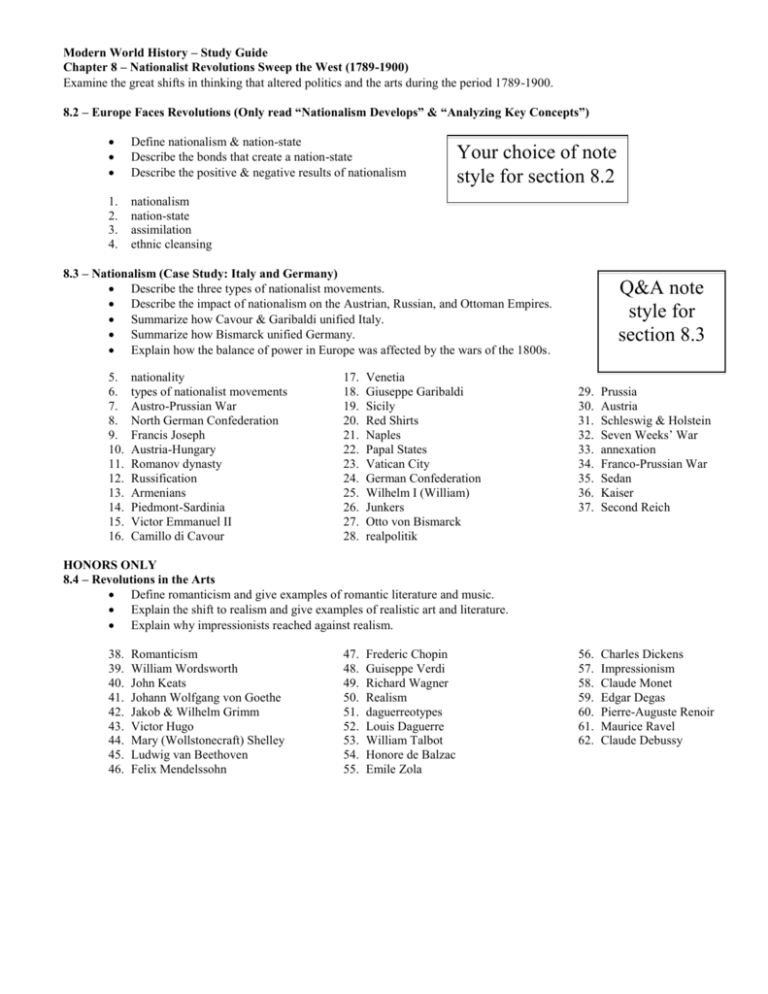
Modern World History – Study Guide Chapter 8 – Nationalist Revolutions Sweep the West (1789-1900) Examine the great shifts in thinking that altered politics and the arts during the period 1789-1900. 8.2 – Europe Faces Revolutions (Only read “Nationalism Develops” & “Analyzing Key Concepts”) Define nationalism & nation-state Describe the bonds that create a nation-state Describe the positive & negative results of nationalism 1. 2. 3. 4. nationalism nation-state assimilation ethnic cleansing Your choice of note style for section 8.2 8.3 – Nationalism (Case Study: Italy and Germany) Describe the three types of nationalist movements. Describe the impact of nationalism on the Austrian, Russian, and Ottoman Empires. Summarize how Cavour & Garibaldi unified Italy. Summarize how Bismarck unified Germany. Explain how the balance of power in Europe was affected by the wars of the 1800s. 5. 6. 7. 8. 9. 10. 11. 12. 13. 14. 15. 16. nationality types of nationalist movements Austro-Prussian War North German Confederation Francis Joseph Austria-Hungary Romanov dynasty Russification Armenians Piedmont-Sardinia Victor Emmanuel II Camillo di Cavour 17. 18. 19. 20. 21. 22. 23. 24. 25. 26. 27. 28. Venetia Giuseppe Garibaldi Sicily Red Shirts Naples Papal States Vatican City German Confederation Wilhelm I (William) Junkers Otto von Bismarck realpolitik Q&A note style for section 8.3 29. 30. 31. 32. 33. 34. 35. 36. 37. Prussia Austria Schleswig & Holstein Seven Weeks’ War annexation Franco-Prussian War Sedan Kaiser Second Reich 56. 57. 58. 59. 60. 61. 62. Charles Dickens Impressionism Claude Monet Edgar Degas Pierre-Auguste Renoir Maurice Ravel Claude Debussy HONORS ONLY 8.4 – Revolutions in the Arts Define romanticism and give examples of romantic literature and music. Explain the shift to realism and give examples of realistic art and literature. Explain why impressionists reached against realism. 38. 39. 40. 41. 42. 43. 44. 45. 46. Romanticism William Wordsworth John Keats Johann Wolfgang von Goethe Jakob & Wilhelm Grimm Victor Hugo Mary (Wollstonecraft) Shelley Ludwig van Beethoven Felix Mendelssohn 47. 48. 49. 50. 51. 52. 53. 54. 55. Frederic Chopin Guiseppe Verdi Richard Wagner Realism daguerreotypes Louis Daguerre William Talbot Honore de Balzac Emile Zola

